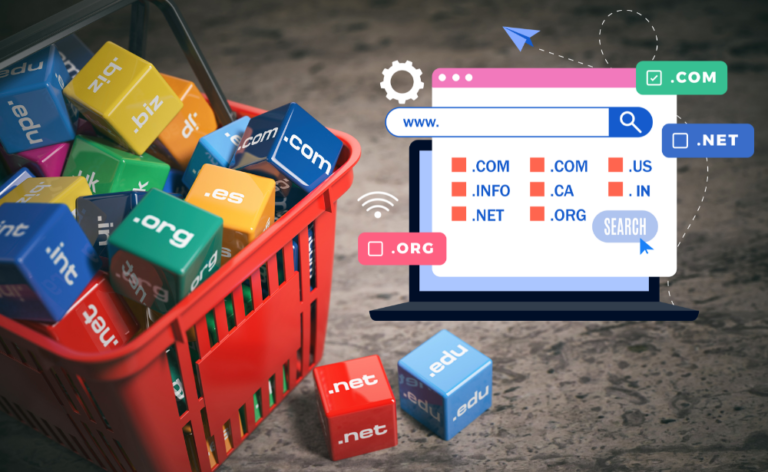Ebooks are one of those tools that businesses have been quietly using to turn casual browsers into loyal subscribers. They’re like the digital version of a handshake – a way to say, “Hey, I’ve got something valuable for you,” in exchange for an email address or contact info. And if done right, ebooks can be a game-changer in the world of lead generation.
But how exactly do you create an ebook that doesn’t just sit in a forgotten folder on someone’s computer? How do you craft something that people are excited to get their hands on and actually read? More importantly, how can you use it to build relationships and grow your audience?
In this guide, we’ll break it down step-by-step, from picking the perfect topic to promoting your ebook like a pro. Let’s keep reading.
Why Ebooks? And Why They Still Work
In a world full of TikToks and tweets, it might seem odd to hear that ebooks are still relevant. But here’s the thing: ebooks work because they offer something different. They go deep where other content can’t. While blog posts skim the surface and social media posts barely scratch it, ebooks dive into the details. People like that, especially when they’re looking to solve a problem.
Think of an ebook like a long conversation. It allows you to really explain things, show your expertise, and, most importantly, offer value. And when people get value, they’re willing to trade their contact info for it. That’s the magic of an ebook as a lead magnet.
Picking a Topic That Actually Matters
We’ve all seen ebooks that feel like they were thrown together in an afternoon – too broad, too boring, and too generic. That’s not what you want. For an ebook to do its job as a lead magnet, it has to feel like a must-read for your audience.
So, where do you start?
It’s All About the Audience
Who’s reading this thing? That’s the question you need to answer before you even think about writing a single word. Your ebook should speak directly to the people you want to reach. If you’re unsure what your audience cares about, it’s time to do some digging.
Check out the questions they’re asking on social media. Dive into your customer service inbox and see what problems keep popping up. You might even run a quick survey using tools like SurveyMonkey to get direct feedback. Whatever method you use, the goal is to find out what’s bugging your audience and how your expertise can help.
Narrow It Down
Once you know what your audience is interested in, don’t go too broad with your topic. Specificity is key here. Instead of writing “A Complete Guide to Marketing,” try something more focused, like “5 Proven Social Media Strategies for Small Business Growth.” Being specific helps your ebook stand out, and readers know exactly what they’re going to get.
You can also peek at what your competitors are doing. Don’t copy them, but look for gaps. What are they missing? How can you provide something new or better?
Crafting Content That Feels Like a Conversation
Now that you’ve got your topic, it’s time to write. But don’t worry – this isn’t about cramming every single detail into your ebook. People like ebooks that are easy to read and feel like a friendly conversation. Here’s how to keep it light while still delivering value.
Make It Relatable
Write like you’re talking to a friend. Ditch the fancy language and complicated jargon. The more relatable you are, the more likely people will stick around and actually read your ebook. A good rule of thumb? If you wouldn’t say it out loud, don’t write it.
For example, instead of “This ebook will help you navigate the complexities of digital marketing,” try “Here’s how to make digital marketing a little less overwhelming.”
Break It Up
People skim. It’s just how things are these days. So, make it easy for them to find the good stuff by using headings, bullet points, and short paragraphs. No one wants to read a wall of text.
Throw in some visuals, too. Infographics, charts, or even just a well-placed image can do wonders for breaking up the content and keeping things interesting. You can use tools like Canva to create visuals that pop.
Design That Doesn’t Hurt the Eyes
A good ebook isn’t just about the words. The design plays a huge role in whether someone decides to read it or toss it into their digital junk drawer. But don’t worry – you don’t need to be a graphic designer to pull off a clean, professional look.
Keep It Simple
When it comes to ebook design, less is more. Stick to clean lines, readable fonts, and a color scheme that doesn’t distract from the content. You want the design to support the message, not overshadow it.
Use consistent headings and fonts throughout, and make sure there’s plenty of white space. No one wants to read something that feels cluttered. If you’re not a designer, tools like Canva and Visme have plenty of templates you can use.
Make It Skimmable
Remember how we talked about skimming? Design your ebook with that in mind. Use bold headings, subheadings, and bullet points so readers can easily find what they’re looking for. And don’t forget to add a call-to-action (CTA) at the end. After all, the whole point of this ebook is to encourage readers to take the next step – whether that’s signing up for a webinar, booking a call, or buying a product.
Promoting Your Ebook Without Feeling Pushy
Your ebook is polished, designed, and ready to go. Now comes the part where a lot of people struggle: promotion. The goal is to get your ebook in front of as many people as possible without coming off as spammy or overly salesy.
Social Media Is Your Friend
Social media is one of the best ways to spread the word about your ebook. But don’t just post, “Hey, download my ebook!” and call it a day. Instead, share snippets from your ebook, highlight key takeaways, or offer a sneak peek of what readers can expect. Get creative with it.
Make it visual, too. People love images and videos, so create eye-catching graphics that showcase your ebook’s cover and the value it provides. Tools like Canva can help you make these easily.
Use stories, posts, and even short videos on platforms like Instagram or LinkedIn to get the word out. And don’t forget hashtags. They’re a simple way to reach more people who are interested in your topic. Check out Hashtagify to find trending hashtags in your niche.
Email Marketing Magic
If you’ve already got an email list, great – this is where you’ll really see some action. Email marketing is still one of the best ways to get people to download your ebook.
Don’t just send a one-off email, though. Create a little buzz before your ebook launches. Send a series of emails that tease the content, build anticipation, and then finally reveal the ebook with a clear call to action.
Make sure your subject lines are interesting enough to get people to click. No one’s opening an email titled “Download My Ebook Now.” Try something like, “The [Insert Problem] You’ve Been Facing? Here’s the Fix.”
Measuring Success Without the Headache
Alright, you’ve got your ebook out there. People are downloading it. Now what? Time to figure out if it’s doing its job.
Tracking Downloads
The easiest metric to track is downloads. How many people actually downloaded your ebook? This gives you a basic idea of how well your ebook is performing as a lead magnet.
But don’t stop there.
Look at Engagement
How many of those people who downloaded your ebook actually opened it? Are they spending time reading it or just skimming through? You can track these kinds of metrics using tools like Google Analytics or Mailchimp if you’ve connected your ebook to an email campaign.
This tells you whether your content is hitting the mark or if there’s room for improvement.
Wrapping It All Up
So, what’s the takeaway here? Ebooks, when done right, can be powerful lead magnets. But the trick is to create something that feels valuable, not just another piece of content that gets lost in the shuffle. Pick a topic that matters to your audience, write it like you’re having a conversation, design it to be easy on the eyes, and promote it without being pushy.
Remember, the goal isn’t just to get people to download your ebook – it’s to start a relationship. When you offer something genuinely valuable, people will remember your brand, come back for more, and hopefully, take that next step with you.
FAQs
1. What makes an ebook a good lead magnet?
An effective ebook as a lead magnet offers valuable and relevant information that solves a specific problem for your audience. It should address their challenges, be easy to understand, and provide actionable insights. Good design and clear organization also help engage readers.
2. How do I choose a topic for my ebook?
To select the right topic, start by identifying your audience’s pain points. You can conduct surveys or participate in discussions to find common questions or issues. Focus on a specific niche to provide more targeted value, and research competitors to offer a unique perspective.
3. What are the best tools to design an ebook?
Design tools like Canva and Visme are excellent for creating professional ebook designs. These tools offer customizable templates, fonts, and graphics that help you design a clean, visually appealing ebook.
4. How do I promote my ebook effectively?
Promote your ebook through social media, email marketing, and collaborations with influencers. Use platforms like Facebook, Instagram, and Mailchimp to reach your audience. Running ads and engaging with followers also boosts visibility.
5. How can I track the success of my ebook as a lead magnet?
Measure the success of your ebook by tracking downloads, conversion rates, and engagement metrics. Tools like Google Analytics and Mailchimp can help monitor performance, while feedback surveys provide valuable insights for improvement.
6. What’s the best way to use an ebook for email marketing?
An ebook is a great way to build your email list. Offer it as a free resource in exchange for contact information, and use it to segment your email list for more targeted campaigns. Engaging subject lines, personalized messages, and clear calls-to-action will drive higher conversion rates.







